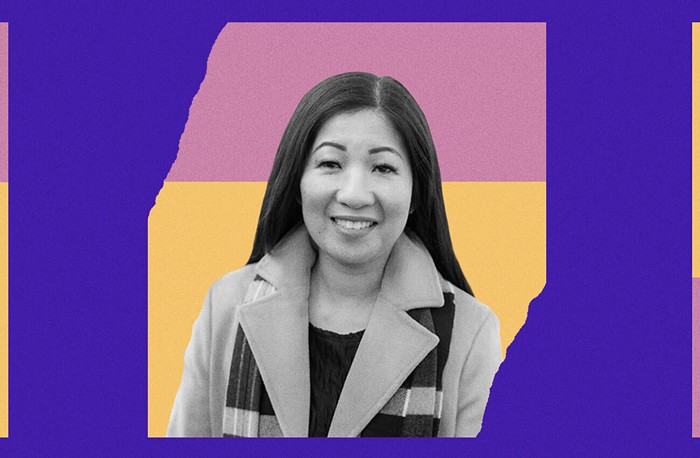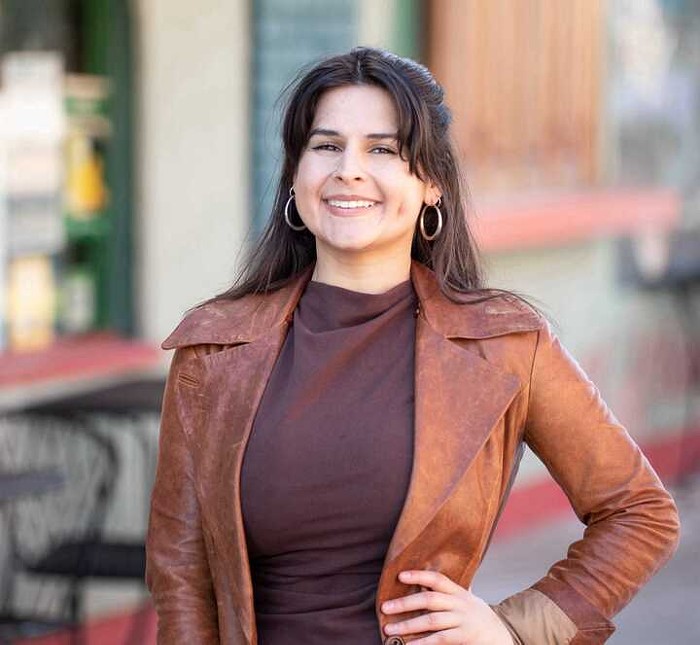
For a little while, it looked like the mayor's $930 million transportation levy was going to be a pretty easy lift. Sure, it's a lot of money and we'd see some tweaking from the city council, but the loudest complaining would probably be Joel Spares-No-One-Not-Even-the-Raging-Grannies Connelly going on about some projects from 2006.
Not anymore. Now Council Member Nick Licata wants to restructure the whole damn thing, walking advocates want more money, and the council is already considering 10 amendments.
At a council meeting about the levy yesterday morning, Licata was in full DGAF mode (he's not running for reelection) as he expanded on his proposal, responded to the mayor's criticism of it, and got into a fun little tiff with Seattle Department of Transportation director Scott Kubly about whether the city is scheming to spend some of this levy money on streetcars instead of road improvements.
Before we get into Licata's amazing meeting, a brief reminder on what, exactly, Mayor Ed Murray's levy proposal is: It gets $930 million over nine years from property taxes—about $275 per year for a $450,000 home—and funds a whole list of street maintenance and improvement projects.
Licata wants to scale that back, getting $600 million from property taxes (about $179 a year for that $450,000 house) and the rest from a combination of taxes paid by businesses, developers, and people who park in commercial parking lots. Which is basically Licata saying, "How can we make this thing more progressive?"
Property taxes aren't the most regressive taxes out there—people with more expensive homes pay more—but they do hit low- and middle-class people who either own houses or whose landlords pass those taxes on to them through rent hikes. Licata (with backup from Council Member Kshama Sawant) wants to spread the pain by combining that smaller property tax levy, a new employee tax paid by businesses, an increase in the commercial parking tax, and impact fees charged to developers. He first pitched this a couple weeks ago and yesterday got into it in more detail with his fellow council members.
Licata's proposal to get transportation money from businesses comes in the form of a tax they would pay based on how many employees they have. This would differ substantially from the city's last version of that tax, which gave exemptions for employees who bussed, biked, walked, or car-pooled to work. Current council president Tim Burgess and others argued that was too complicated to administer—was it, actually?— and got their way in 2009. Licata's new idea does away with those exemptions and reduces the tax from $25 per employee to $18, or "less than a penny per hour," as Sawant put it. (That's not to say there wouldn't be any exemptions. Small businesses that are exempt from the B&O tax, like those that bring in less than $100,000 a year, would also be exempt from this.)
At the same time, Licata is pitching an increase in the commercial parking tax, which parking lot operators charge people to park in those lots and ranges from 12.5 percent to 17.5 percent. City staff estimate that those two efforts combined would raise $230 million over the levy's nine years. (That's a total of $830 million. If his ideas for a new employee tax and an increased commercial parking tax gain traction, Licata says he'll also propose transportation impact fees, which would be charged on developers when they build new projects, to make up the other $100 million.)
This alternative is also a way to address worries that Seattle voters may not be as generous as they've always been this fall. (The mayor's transportation measure is the largest levy in the city's history, and is coming ahead of even more expected levies to pay for affordable housing and Sound Transit light rail expansion.)
In a letter responding to Licata's ideas, Murray said Licata's tax proposals "ultimately may serve as complements rather than replacements for the levy." In other words: Seattleites are cool with paying all this in property taxes now, so let's keep that other stuff in our pocket for later.
"It's a question of timing," Licata said at yesterday's meeting. "I think the timing is better to use those now."
Sawant agreed. "The council should use whatever progressive means are at our disposal," she said, "to cut across the most regressive tax system in the entire nation.” (Here's what she means.)
This proposal mirrors something Sawant and Licata have already tried—unsuccessfully—to do. When the council was sending the Metro funding measure to the ballot last year, Licata and Sawant wanted to replace a sales tax hike with an employee head tax and small increase in the commercial parking tax. They were the only two council members to vote for that. It wasn't clear yesterday whether their colleagues are any more interested in the idea this time around.
To the point of this state's fucked up tax system, Sawant also said she's working with the city's legal department on a resolution that would ask the state to give cities the authority to give property tax breaks to all low-income people, possibly defined as anyone making 80 percent or less of median income. That, she said, "will lean the property tax towards being more progressive."
But back to the stuff that the city can actually do on its own, like, say, building streetcars. That's what got Licata into a little fight with Kubly, the SDOT director. Licata said he doesn't harbor some sort of weird animosity toward streetcars (like The Stranger's Christopher Frizzelle), but that he was under the impression that the levy wasn't intended to fund streetcars. So, he proposed an amendment "memorializing" that. It states simply, "None of the levy proceeds may be used to build or operate street cars."
That made Kubly uneasy. He told the council his department plans to use advertising revenue paired with federal dollars—not levy money—to expand streetcars on Capitol Hill and downtown. (You're right to be skeptical. Ad revenues on the South Lake Union Streetcar have fallen short of expectations.) But SDOT wants to keep the possibility of using levy money on streetcars open just in case.
That set off this exchange:
Licata: This is new information that this levy will be funding—that the intent is to build and operate a streetcar and I think that is something that the public should know because I'm not sure—
Kubly: I think that's a mischaracterization of what I said.
L: Well, the high probability.
K: I would also...say that's a mischaracterization. I said it preserved flexibility. I didn't opine on the probability.
L: OK, well, a probability within nine years...A probability that we will be spending money on the central streetcar.
K: I did not say that it would be probable. I said we'd like to preserve the flexibility.
L: That sounds like a probability to me.
Then Licata made this face:

Kubly ended the exchange by saying, "Every budget that we have is approved by the city council, so I think that the probability resides with the city council."
Cue awkward transition to Council Member Bruce Harrell, who said, "I look forward to seeing a recap of that exchange on the news." You're welcome, Bruce.
The other amendments (which you can read in their entirety in the meeting agenda right here, you weirdo) are pretty in-the-weeds, adding more money for Safe Routes to School, clarifying how much the city expects in matching funds for the projects in the levy, and "reorganizing the spending breakdown." That may be one of the most boring phrases I've ever typed, but it's actually a little interesting because it helps explain the priorities of where all this money will be spent. That amendment, introduced by Council Member Tom Rasmussen, creates three new categories into which all the levy spending must be categorized. It also says the city has to spend at least a certain amount on each one: $420 million on maintenance and repair projects, $329 million on relieving congestion, and $181 million on safety improvements, including signs, bike/ped improvements, and Safe Routes to School.


















